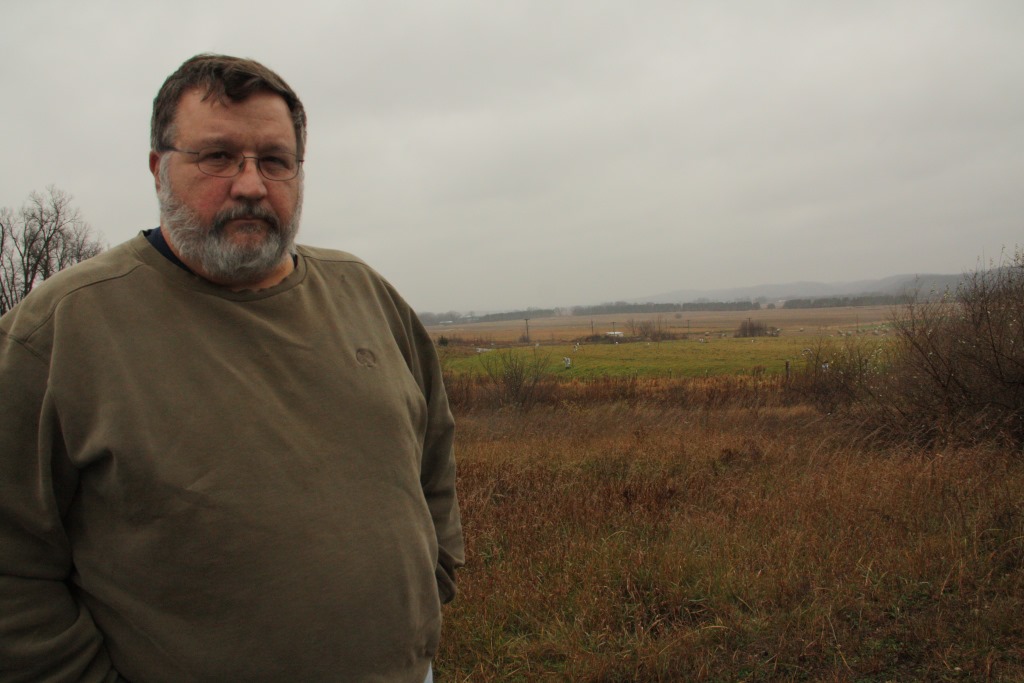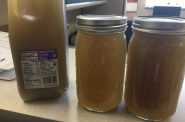Army Facility Still Pollutes
Badger Army Ammunition Plant left stew of chemicals that pollute groundwater.
Clean water on the way?
Anderson said that given the concerns and uncertainties, state health officials believe the best course of action is to keep people from using water from residential wells near Badger.
The Army has proposed spending about $40 million to build a municipal drinking water system to serve some 400 properties in the Sauk County towns of Merrimac, Sumpter and Prairie du Sac plus 150 undeveloped residential lots. The price tag includes the cost of operating the system for the first five years and 20 years of groundwater monitoring in and around Badger. Customers would pay for the operation after five years.
Town of Merrimac resident Gene Franks believes a new water system is the only way to guarantee residents’ drinking water will be safe.
“The only way you really know for sure is to have a water supply outside of where the contamination occurred,” Franks said. “It seems to me to be a viable solution to having this gnawing doubt over the years that there might be some plume that might move into an area that no one ever expected. This would give us that 100 percent assurance.”
Franks is co-founder of Citizens for Practical Water Solutions, which pushed for formation of the new system. The group’s other founder, Roger Heidenreich, said many residents support the project — but not all. Some whose private wells are not tainted do not want to pay for water from a public water system — especially one that could later need costly upgrades or repairs, Heidenreich said.
And although the Merrimac Town Board approved formation of the water district in May, the Army still must approve the funding, which would trigger another round of review and negotiation that could take up to a year.
Residents at a March meeting in Sauk City also expressed concern about the plan to reduce monitoring at Badger over the next 20 years, which would end in 2032 unless contaminants continue to be found.

Mike Sitton, commander’s representative for the Badger Army Ammunition Plant, said the cost of environmental cleanup so far at the site has been around $125 million. In the background is the old propellant burning ground where contaminated soil and groundwater were treated and the site capped in 2008. Photo by Kim Lamoreaux of the Sauk Prairie Eagle.
In addition, the Army plans to stop extracting and treating groundwater at Badger after four years once the water system is built, relying instead on natural processes to decrease the remaining contamination over time. In 2011, it reported extracting just 18 pounds of contaminants after pumping and filtering millions of gallons of groundwater.
Town of Merrimac Administrator Tim McCumber is cautiously optimistic the new system will solve his community’s drinking water problem. McCumber mainly wants to make sure the system can grow as the community grows and not become a financial burden to local residents.
For Mary Jane Koch, the new water system offers some hope. She was overjoyed when she got the phone call that the Army was going to provide a clean source of water for families around Badger. Koch will worry less about the drinking water in her neighborhood once the system is in place.
But she said the notion that the groundwater at Badger is contaminated, and may be for years to come, will always be in the back of her mind.
That tempers her joy.
The story was produced as part of journalism classes participating in The Confluence, a collaborative project involving the Center and UW-Madison School of Journalism and Mass Communication. The nonprofit Wisconsin Center for Investigative Journalism (www.WisconsinWatch.org) collaborates with Wisconsin Public Radio, Wisconsin Public Television, other news media and the UW-Madison School of Journalism and Mass Communication. All works created, published, posted or disseminated by the Center do not necessarily reflect the views or opinions of UW-Madison or any of its affiliates.
Tainted Water
-
Fecal Microbes In 60% of Sampled Wells
 Jun 12th, 2017 by Coburn Dukehart
Jun 12th, 2017 by Coburn Dukehart
-
State’s Failures On Lead Pipes
 Jan 15th, 2017 by Cara Lombardo and Dee J. Hall
Jan 15th, 2017 by Cara Lombardo and Dee J. Hall
-
Lax Rules Expose Kids To Lead-Tainted Water
 Dec 19th, 2016 by Cara Lombardo and Dee J. Hall
Dec 19th, 2016 by Cara Lombardo and Dee J. Hall


















It’s interesting that the military, paid for by us, is now claiming to install a solution to what they did, to be paid for … wait for it … by us! Why wouldn’t the powers that made the initial poisoning decision be responsible and accountable for the bill?
Operations of this facility predate most environmental laws and more scientific awareness that evolved in the 1970s. Even though as a society we still struggle with corporations still doing their best to buy off politicians that still want to turn a blind eye and mind to damages left on the landscape for hundreds or more years doing untold harm to humans and all other life forms. Once groundwater is damaged in this way it is near impossible to clean up.
Even though there were few environmental laws at this time, it was insanity dumping toxic materials all over the landscape. It really is inexcusable. It is immoral that business walks away and citizens are left holding the costly cleanup and harm to life.